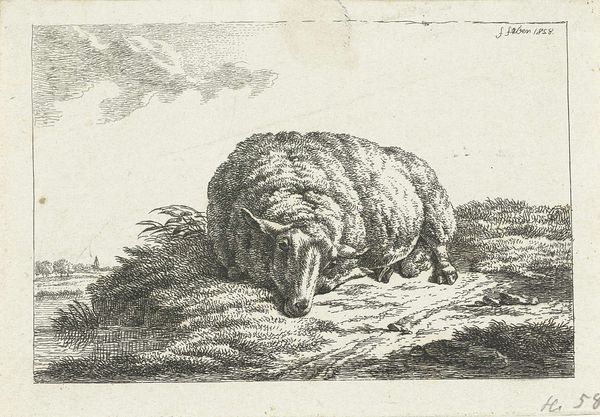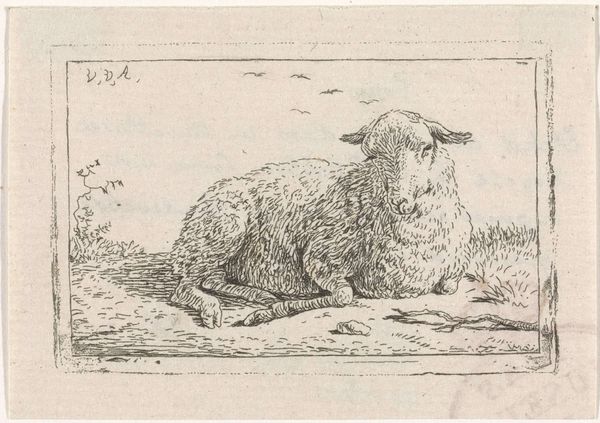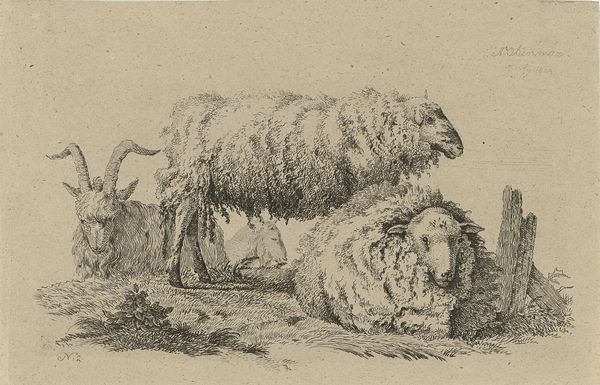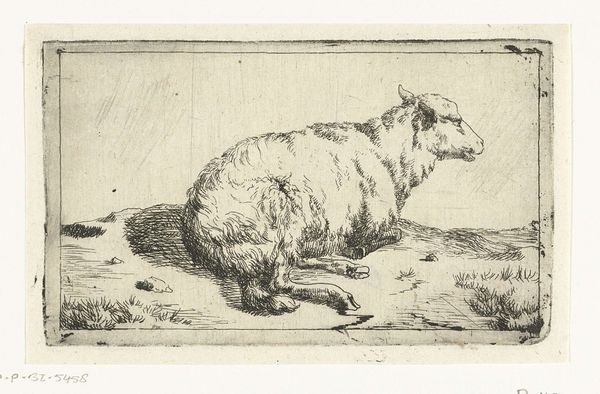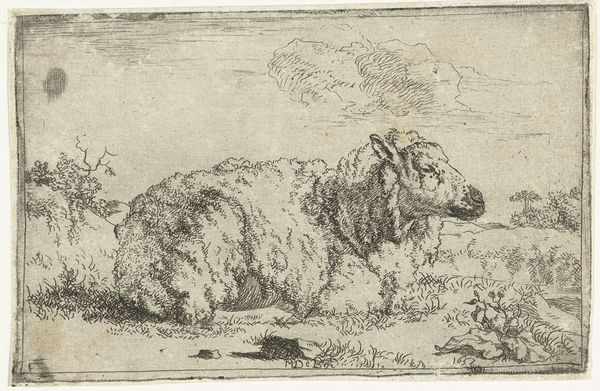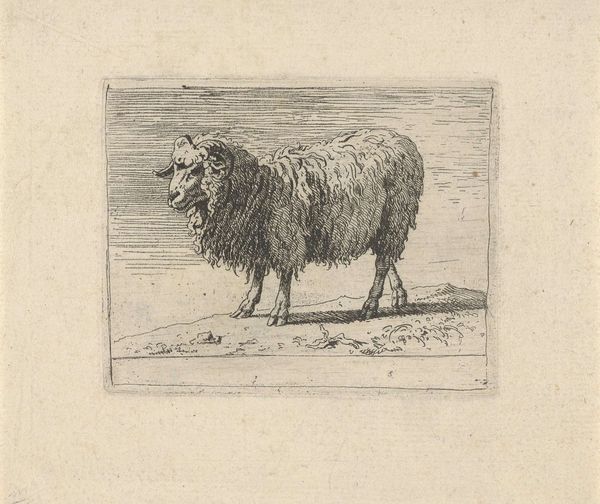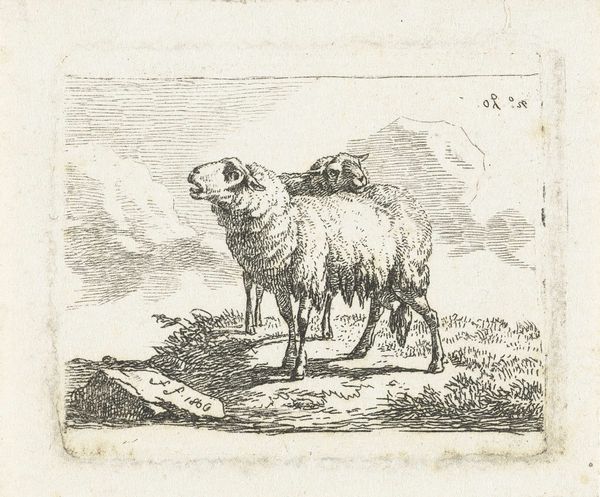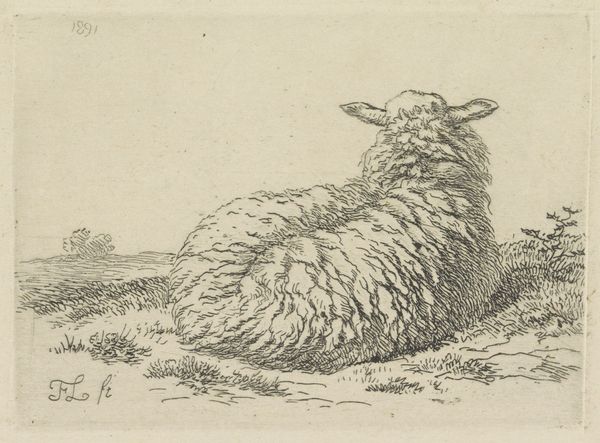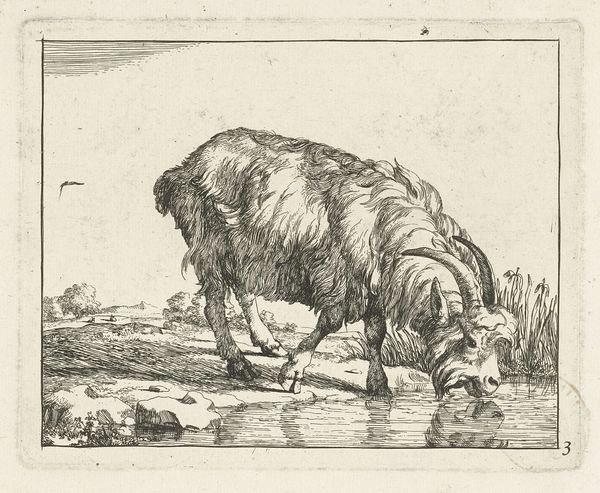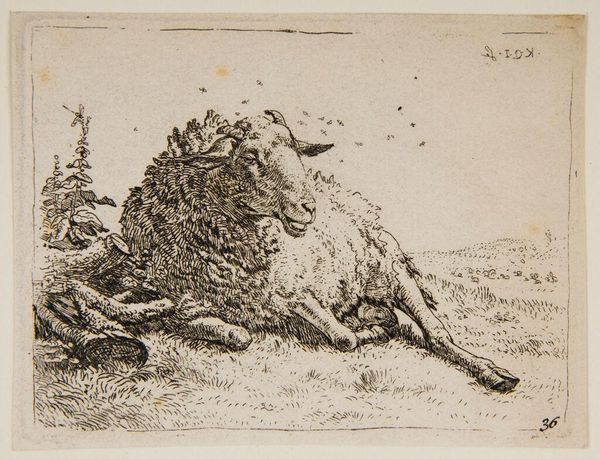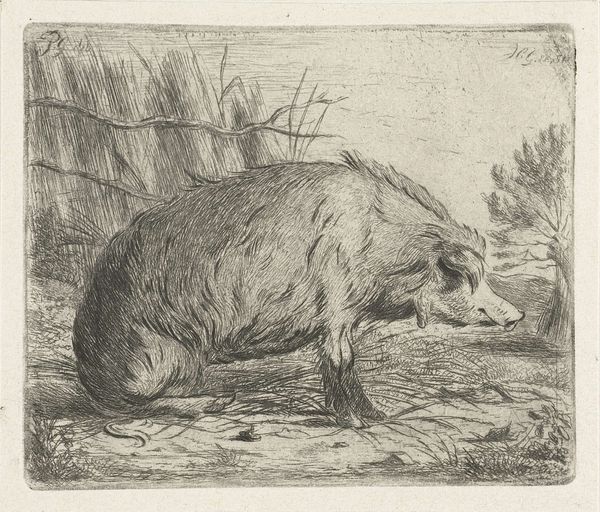
drawing, ink, pen
#
drawing
#
dutch-golden-age
#
landscape
#
figuration
#
ink
#
ink drawing experimentation
#
pen work
#
pen
Dimensions: height 68 mm, width 111 mm
Copyright: Rijks Museum: Open Domain
Editor: So, here we have “Ram,” a pen and ink drawing by Govert van der Leeuw, likely created sometime between 1655 and 1688. It strikes me as… strangely peaceful. Just a ram, lying there. What do you see in this piece, beyond a very fluffy animal? Curator: Peace is a lovely starting point. But consider this: it’s not *just* a ram. Think about the symbolism embedded within animals in the Dutch Golden Age – the ram could represent strength, fertility, even sacrifice. It’s interesting how van der Leeuw uses such delicate linework to depict something potentially quite powerful. The ram seems almost weighed down by its own wool, don't you think? A funny burden! Editor: Weighed down… that’s a good way to put it. So, you’re suggesting that it’s not just about pastoral tranquility, but also hints at something deeper? Curator: Exactly! And look at the landscape—or lack thereof. The bareness emphasizes the ram's isolation. The drawing is less about picturesque scenery, and more about character. Is he weary? Contemplative? Is he merely waiting, or plotting the next head-butt? Van der Leeuw leaves it intriguingly ambiguous. What is it *thinking*? Editor: I didn’t pick up on any of that, honestly. Now that you mention it, though, that bleak background makes it seem… less cozy, more existential. Like a furry, horned philosopher. Curator: Precisely! See, even a seemingly simple drawing can offer endless layers. Dutch artists of the Golden Age were masters of visual subtlety, weaving meaning into every line. Editor: I'll definitely never look at a drawing of a farm animal the same way again. Curator: Good! Art should always challenge you and nudge your perception.
Comments
No comments
Be the first to comment and join the conversation on the ultimate creative platform.

